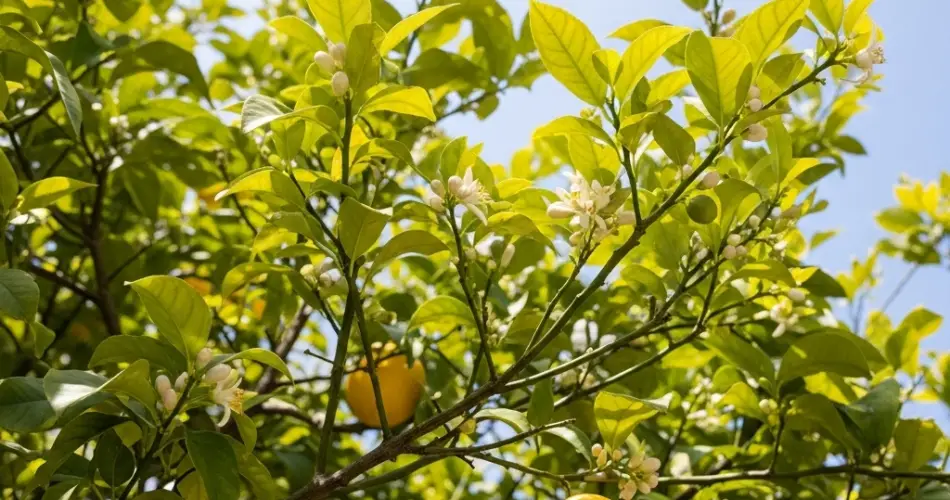Propagating lemon trees from cuttings is a fantastic way to grow new trees at no cost—and using aloe vera as a natural rooting hormone can dramatically boost your success. This simple yet powerful technique is perfect for home gardeners looking to expand their citrus collection without relying on synthetic chemicals.
Aloe vera contains natural growth-promoting compounds and antiseptic properties, making it ideal for rooting citrus branches such as lemon, lime, or orange. With the right method and care, you can root multiple lemon tree cuttings using just aloe vera and basic supplies—no nursery required.
Why Use Aloe Vera as a Rooting Agent?
Aloe vera is rich in plant hormones, enzymes, amino acids, and salicylic acid. These compounds help:
-
Stimulate root growth
-
Protect cuttings from fungal infections
-
Improve water retention at the cut base
-
Heal plant tissue quickly
It’s an effective, natural alternative to commercial rooting hormones, especially for organic gardeners.
What You’ll Need
-
Healthy lemon tree branches (cuttings)
-
A mature aloe vera leaf
-
A sharp, clean knife or pruning shears
-
Pots or trays with moist soil or compost
-
A transparent plastic bag (optional for humidity)
Step-by-Step: How to Root Lemon Tree Branches Using Aloe Vera
1. Select and Cut the Right Branches
Choose semi-woody, healthy branches from a mature lemon tree. Each cutting should be around 15–20 cm (6–8 inches) long with 3–4 leaf nodes. Avoid branches with signs of disease or damage.
Using sterilized pruning shears or a knife, make a clean diagonal cut just below a node (where a leaf emerges). Remove the lower leaves to leave a bare stem at the bottom and keep a few leaves at the top.
2. Prepare the Aloe Vera Gel
Cut a thick aloe vera leaf from the base of the plant. Split it open lengthwise to access the clear gel inside. Scrape or squeeze out the gel into a bowl, or simply insert the cuttings directly into the open leaf for a few minutes.
3. Apply the Aloe to the Cuttings
Dip the base of each lemon cutting into the fresh aloe vera gel. Let the gel coat the stem completely—this acts as both a rooting stimulator and an antifungal barrier.
4. Plant the Cuttings in Soil
Fill small pots or a seed tray with light, well-draining soil (a mix of compost and sand or perlite works well). Make a hole in the soil and insert each cutting, firming the soil gently around the base to support it.
Water lightly, ensuring the soil is moist but not soaked.
5. Create a Humid Environment (Optional)
Cover the pot or tray with a transparent plastic bag or dome to create a mini greenhouse. This helps maintain humidity, which is vital for root development. Make sure the covering doesn’t touch the leaves.
Place the setup in a warm, shaded location with indirect sunlight.
Aftercare: Supporting Root Development
-
Temperature: Keep the cuttings at 21–26°C (70–78°F). Avoid direct sun during the rooting phase.
-
Watering: Mist the soil lightly if it starts to dry out. Do not overwater, as this can cause rot.
-
Ventilation: Open the plastic bag occasionally to prevent mold buildup.
-
Rooting Time: Lemon cuttings may take 3–6 weeks to develop roots. You can gently tug on a cutting after a few weeks—resistance means roots are forming.
Transplanting Rooted Cuttings
Once roots are visible or the cutting shows new growth, it’s ready for transplanting into a larger pot or garden bed.
Steps:
-
Gently remove the rooted cutting from the tray without damaging the roots.
-
Plant it in a larger container with rich, well-draining citrus soil.
-
Place the plant in partial shade for a few days, gradually increasing sunlight exposure.
-
Water moderately and avoid fertilizing until the plant is well established.
Tips for Success
-
Use fresh aloe vera gel—store-bought versions may contain preservatives that affect rooting.
-
Always use clean tools to prevent fungal infections.
-
Don’t overcrowd cuttings—space them out to improve air circulation.
-
For added nutrients, some gardeners mix aloe vera gel with cinnamon powder or honey, both of which have antimicrobial properties.
Why This Method Works So Well
Aloe vera doesn’t just stimulate root growth—it also protects your cuttings during their most vulnerable stage. The gel seals the open stem, deters pathogens, and encourages quick cell regeneration.
Plus, the entire process is free from chemicals, easy to do at home, and completely sustainable.
Conclusion
With just a few lemon tree branches and a fresh aloe vera leaf, you can propagate healthy, vigorous citrus trees right from your own garden. This method is especially useful for gardeners who prefer eco-friendly, budget-conscious techniques.
Whether you’re expanding your orchard or simply enjoying the joy of growing, rooting lemon tree branches using aloe vera is a highly effective and rewarding way to grow new plants—all from what you already have at home.



